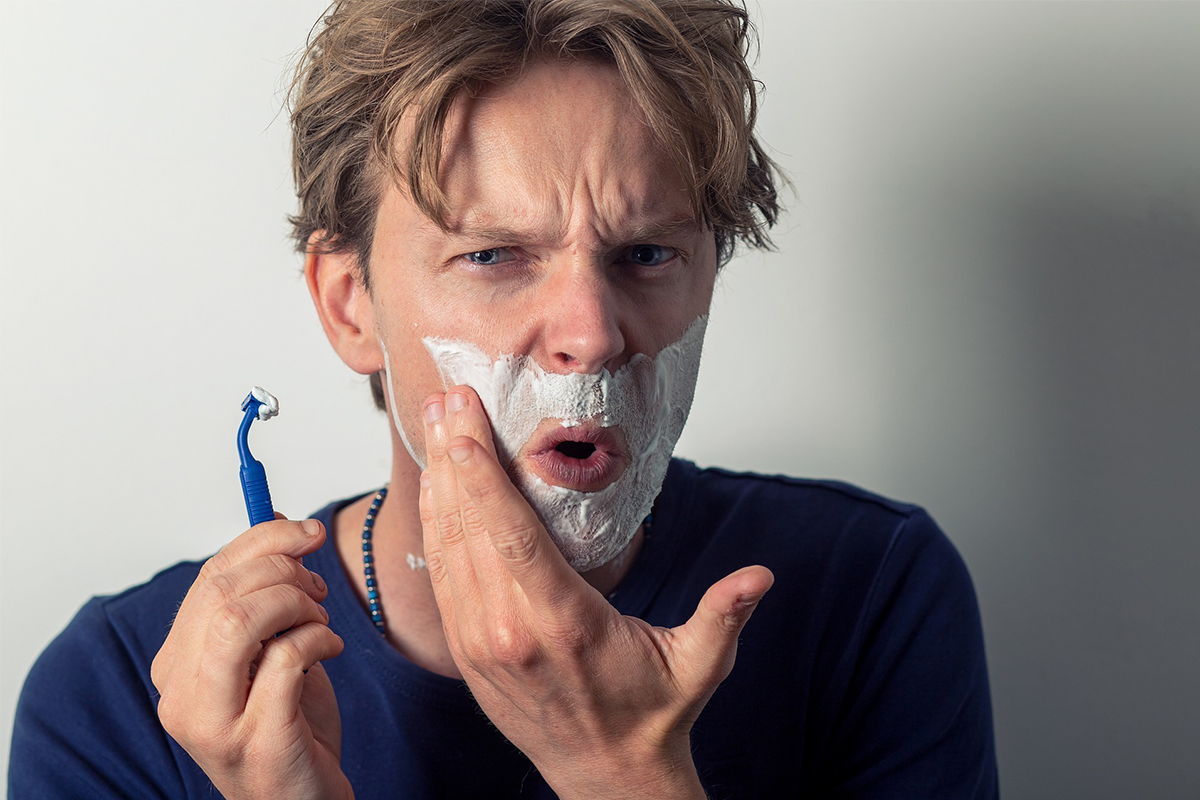Can Shaving Cause Acne? How To Prevent Shave Pimples?

A neat, clean-shaven look is super hard to achieve, especially when facial hair is dense with good growth. It's hard to achieve, not just with the right blades or razors; it's super hard and rough on your skin. Also, when hair is shaved close, it grows into the skin rather than out from the pore as it usually does. This ingrown hair causes inflammation that looks like acne.
But even when men are extra careful about their shaving technique? Those red, angry-looking bumps and breakouts afterward. These look like acne but are generally not. Acnes are caused by excess sebum production. Our pores get clogged with oil and dead skin with tiny dirt particles, forming blackheads or whiteheads. Shaving shouldn't cause acne per se, but it can irritate/worsen existing acne and cause razor burns. So, then what exactly causes these sneaky, annoying acne boils? And how must men turn to acne prevention and pimple prevention products and treatment tips? Read on to find out.
Here are three things you got to know before knowing how to treat or prevent them:
- You are here because you're most likely having breakouts in razor bumps and not pimples.
- However, shaving can sometimes cause acne. Unhygienic and unclean razor blades, irritating skin products, and poor shave prepping can cause breakouts.
- Knowing the difference between razor bumps and acne is key to achieving effective acne or pimple prevention treatment.
Razor Bumps Vs. Acne – How are they different?
It's a common mistake to think razor bumps are acne. Both appear like red swollen bumps that are painful when touched. However, their cause of occurrence is different.
Razor Bumps: When hair is shaved, it grows back into the skin, sometimes resulting in ingrown hair. These ingrown hair strands irritate the hair follicle and epidermis layers, resulting in redness and swelling.
Pimples: Clogged pores with oil, dust, and dead skin cells cause pimples to form on your skin. While it's easier to identify whiteheads and blackheads, the real problem is when your pimples aren't treated, and your skin develops a diseased condition.
Acne: Acne is that diseased condition mentioned above of the skin where untreated pimples are a frequent cause. Pimples are a symptom of acne.
The easiest way to make out this difference is noticing if you only get breakouts or bumps after shaving. If it's only after shaving, it's most likely razor bumps and not acne. However, improper shaving results in embarrassing redness and blemishes on the skin that looks way worse than they feel.
How Can Shaving Sometimes Cause Acne?
These sneaky bumps have their stubborn ways to appear. If your skin shows signs of blemishes right after shaving, the following could be some causes:
Dirty or Old Razor Blades: Old razor blades harbor harmful bacteria that penetrate your skin when gliding your blade across your cheek and chin. Ensure you're swapping out your razor every five shaves – 10 is the absolute max to be lazy around razor changes.
Shaving Products: Shaving products like shaving creams and gels made of low quality can irritate the skin, leading to swelling that turns into a pimple. Instead, search for skin products engineered for men that do not contain fragrances and dyes to minimize breakouts.
Using Hot Water To Rinse Your Face: Once you're done with shaving, your pores need to close to prevent the clogging of dirt and debris that cause acne. Rinsing your face with cold water after shaving will close your pores well.
Acne or Still Razor Bumps? Now, you've changed your razor blades, and you're using good shaving products. But you're still breaking out and having bumps on your face. So, what's the problem? This suggests that your blemishes are razor bumps and NOTHING MORE! Check if you're making the following errors:
Dull Blades: As we mentioned, you need to replace your razor blade more often. The blades can become dull very quickly if you're a regular shaver. These dull razors result in uneven shave and ingrown hair. Once ingrown hair develops, they look like tiny pimples.
Not Showering Before You Shave: Having a nice, hot shower helps open pores and clean the dirt stuck inside them. This is good to get a close, clean shave. It's also a perfect time to scrub your face nicely.
Using Soap Bars: Soaps are not formulated for sensitive skin on the face and neck. It can dry the skin excessively. Use Qraamen's Facial Wash that's specifically formulated for your face instead. This will reduce skin redness and irritation and prevent razor bumps and acne.
Poor Shaving Technique: Shaving against hair growth is a big no-no! This will tug the hair strand, pulling it away from the skin and causing razor bumps.
How To Prevent Shave Pimples?
Establish a proper skincare routine: Cleaning, exfoliating, and moisturizing are necessary if you wish to achieve a good shave without acne or razor bumps.
Choose the right tools: The best way to avoid razor bumps is not shaving at all. But we get it not everyone wants the five o'clock shadow look. If you must shave, use single-blade razors instead of multi-blade ones to reduce the chances of getting razor bumps.
Wash your razor properly: Rinse your razor blade to remove debris and ensure a clean shave after every stroke. Sterilize the blade after you're done by running it under hot water.
Use pre-shave oil: The secret to achieving the perfect shave is small amounts of pre-shave oil. Ensure you choose a pre-shave oil with the right ingredients that suit your skin. You'll notice a huge difference in how your razor just glides on your skin effortlessly. This way, you'll have lesser chances of getting razor cuts or bumps.
Use men's acne treatment: If you still notice bumps, use men's acne treatment products to treat them. For example, it's much easier to shave a clear face.